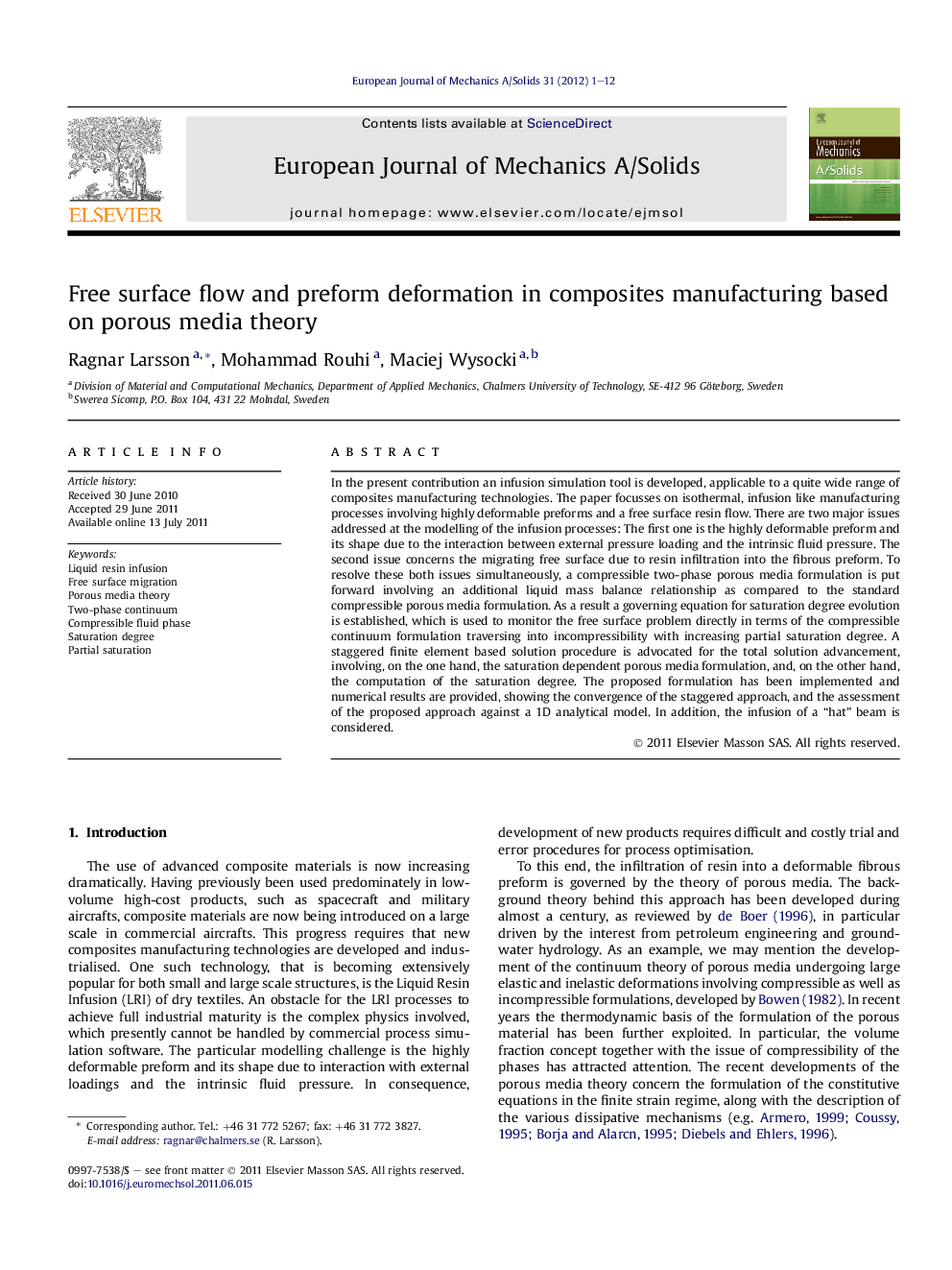| Article ID | Journal | Published Year | Pages | File Type |
|---|---|---|---|---|
| 778049 | European Journal of Mechanics - A/Solids | 2012 | 12 Pages |
In the present contribution an infusion simulation tool is developed, applicable to a quite wide range of composites manufacturing technologies. The paper focusses on isothermal, infusion like manufacturing processes involving highly deformable preforms and a free surface resin flow. There are two major issues addressed at the modelling of the infusion processes: The first one is the highly deformable preform and its shape due to the interaction between external pressure loading and the intrinsic fluid pressure. The second issue concerns the migrating free surface due to resin infiltration into the fibrous preform. To resolve these both issues simultaneously, a compressible two-phase porous media formulation is put forward involving an additional liquid mass balance relationship as compared to the standard compressible porous media formulation. As a result a governing equation for saturation degree evolution is established, which is used to monitor the free surface problem directly in terms of the compressible continuum formulation traversing into incompressibility with increasing partial saturation degree. A staggered finite element based solution procedure is advocated for the total solution advancement, involving, on the one hand, the saturation dependent porous media formulation, and, on the other hand, the computation of the saturation degree. The proposed formulation has been implemented and numerical results are provided, showing the convergence of the staggered approach, and the assessment of the proposed approach against a 1D analytical model. In addition, the infusion of a “hat” beam is considered.
► An infusion simulation tool is developed for composites manufacturing. ► The highly deformable fibrous preform is modelled using porous media theory. ► The migrating free surface of resin infiltration into the preform is modelled. ► A staggered finite element based solution procedure is advocated for the solution. ► The FE-results shows the convergence of the staggered approach.
